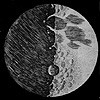|
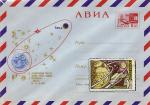 Tuesday, September 14, 2004
Tuesday, September 14, 2004
14.09.2004 | Lunnoe foto dnya
By mid-1968 the Soviets were clearly behind in the race to the Moon. The USA had achieved great technical and scientific successes with Surveyor and Lunar Orbiter precursor probes, while the Soviets had not progressed beyond the Luna 9 and 13 landings.
 Vyrazitel'naya Luna
Vyrazitel'naya Luna
13.09.2004 | Lunnoe foto dnya
Tonkii serpik Luny, visyashii nizko nad gorizontom sredi oblakov i listvy yavlyaetsya samym vdohnovlyayushim vidom. Net neobhodimosti v nauke, chtoby poluchat' udovol'stvie ot zhizni i nablyudatel'nosti. — Chak Vud Tehnicheskie detali: Kompoziciya iz dvuh izobrazhenii — na zadnii plan dobavleno bol'she oblakov.
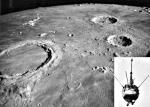 First on the Moon
First on the Moon
12.09.2004 | Lunnoe foto dnya
In January, 1959 the Soviet Union startled the world by launching a spacecraft towards the Moon. It missed by 6000 km but was the first object to escape Earth orbit and the first to pass near the Moon.
 A Steep Spot on the Moon
A Steep Spot on the Moon
11.09.2004 | Lunnoe foto dnya
Looking at even the best images from Earth or Lunar Orbiter we seldom get a feeling for the actual heights and slopes of lunar features. But while orbiting the Moon, Apollo astronauts used Hasselblad cameras to take some spectacular low oblique shots and even a few profiles.
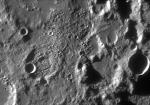 Viscous Volcanics?
Viscous Volcanics?
10.09.2004 | Lunnoe foto dnya
One of the weirdest terrains on the Moon is a mound of lumpiness extending north from the crater Descartes. This terrain consists of a series of hills and ridges separated by valleys and depressions. It looks like a super-large, rough-textured lava flow erupted in Deslandres and flowed over the crater wall to the north.
![]() Eight is Enough
Eight is Enough
9.09.2004 | Lunnoe foto dnya
The Moon is the most incredible object in the night sky - at least visually. Hour by hour and night by night it moves across the sky, changing its illuminated shape. This progression is dramatically illustrated in a mosaic from eight consecutive nights of imaging by Peter Lawrence.
 Where in the Moon is Nielsen?
Where in the Moon is Nielsen?
8.09.2004 | Lunnoe foto dnya
I must admit that I have never heard of the crater Nielsen, but then I realized that this was another unnecessary naming change left over from those nomenclaturally wild 1970s. Nielsen, named for both...
 Helen's Husband
Helen's Husband
7.09.2004 | Lunnoe foto dnya
Although the lunar crater Menelaus is named for a Greek astronomer in ancient Alexandria, I prefer to think instead of another Menelaus, the warrior husband of Helen of Troy. The lunar Menelaus is a 27 km wide, 2.6 km deep crater straddling the rim of the Serenitatis basin and the mare that fills the basin.
 Terrific Taruntius
Terrific Taruntius
6.09.2004 | Lunnoe foto dnya
Taruntius is an often overlooked crater. There are few photos of it by amateurs or spacecraft. This great image by Tom Leech shows what we have been missing. The 58 km wide crater...
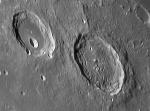 Lunar Super-Heroes
Lunar Super-Heroes
5.09.2004 | Lunnoe foto dnya
The Olympics are over, but some Greek super heroes live forever. Two of the mightiest gods of ancient Greece were Atlas and Hercules. Atlas was so strong that he held the Earth...
